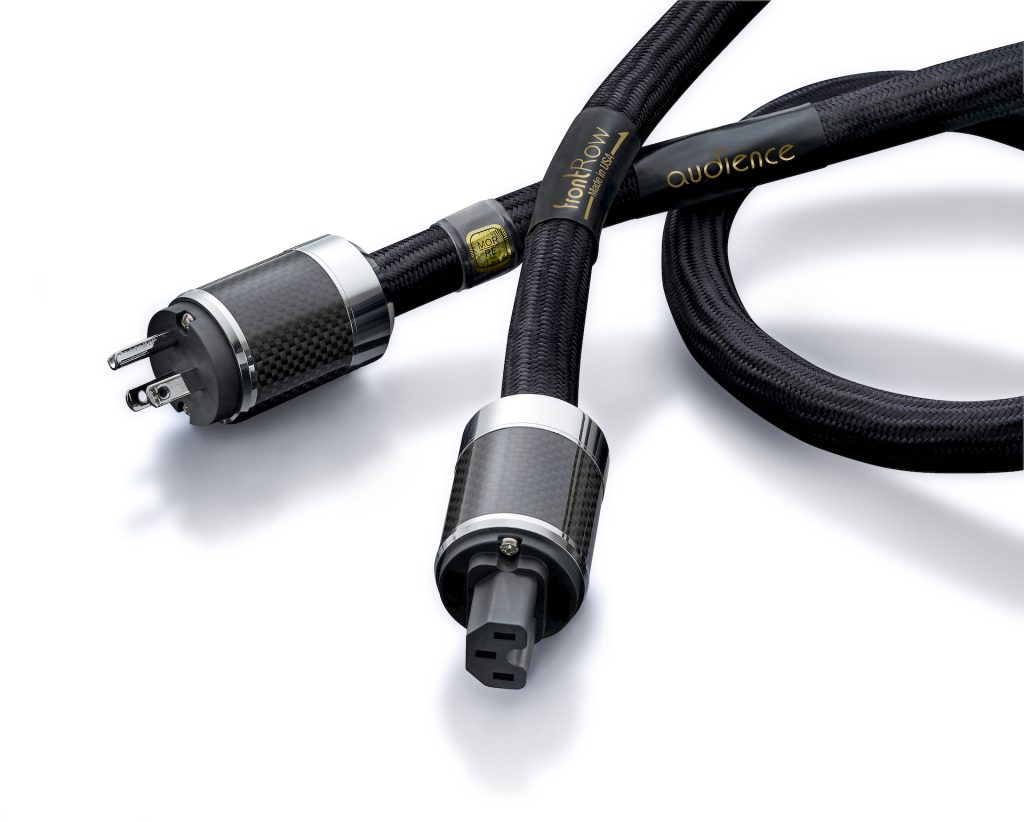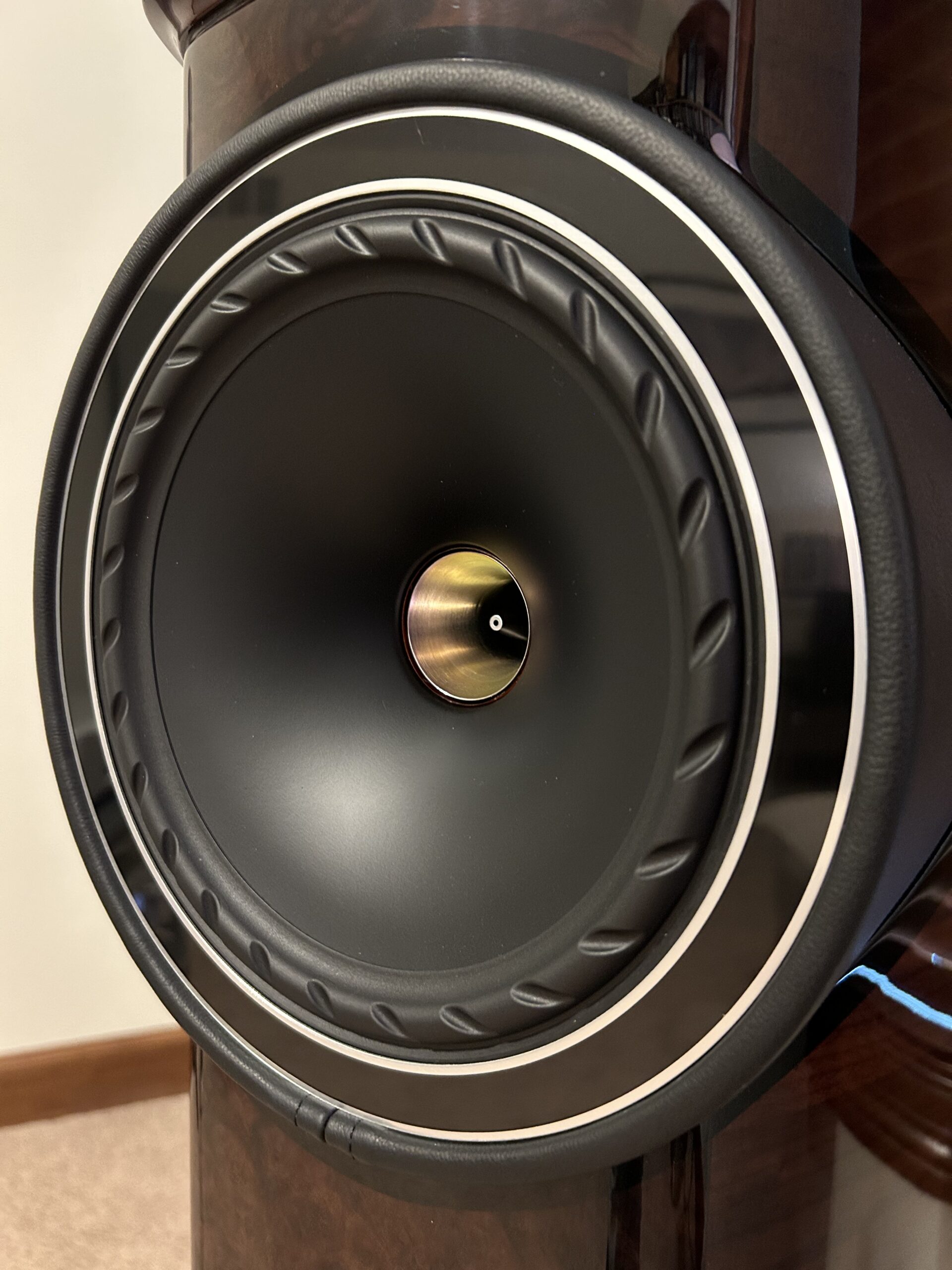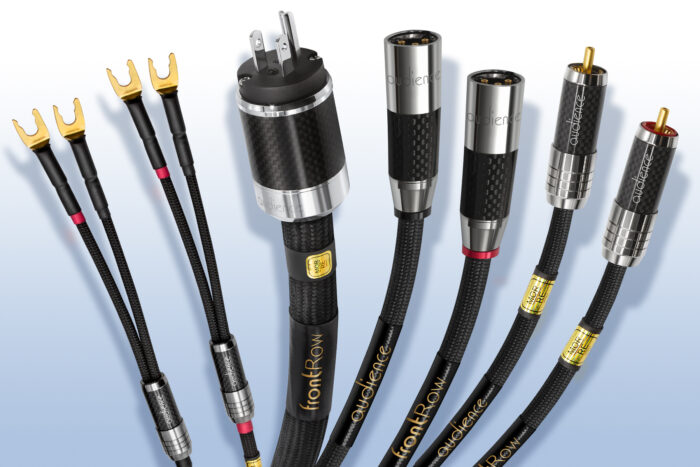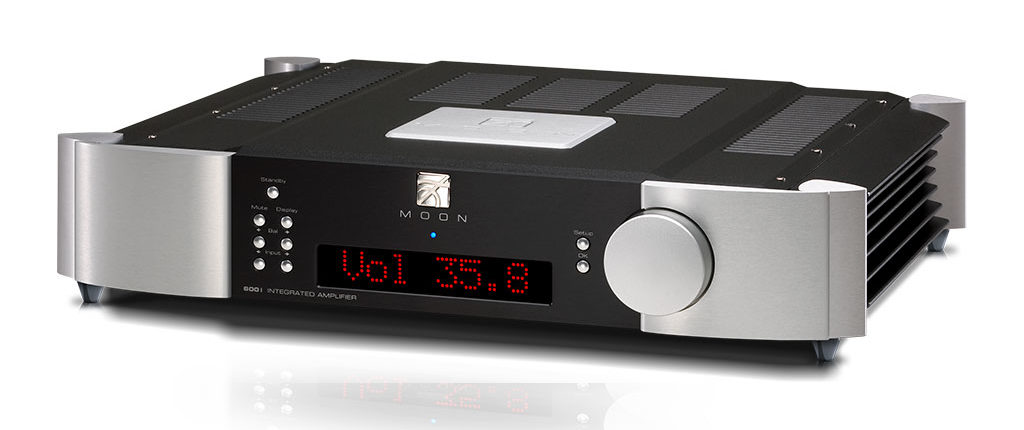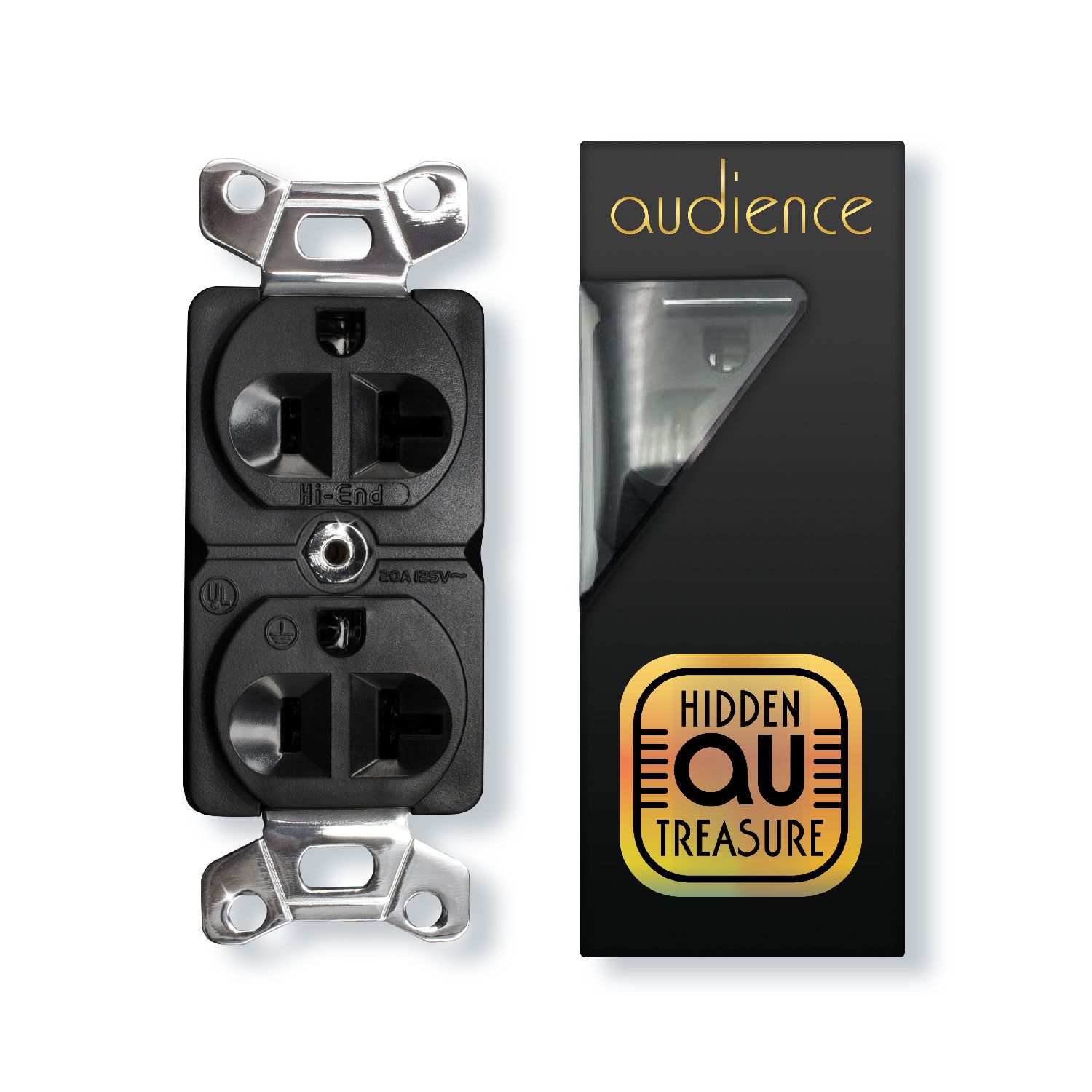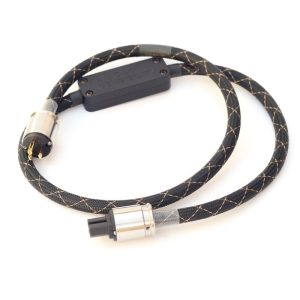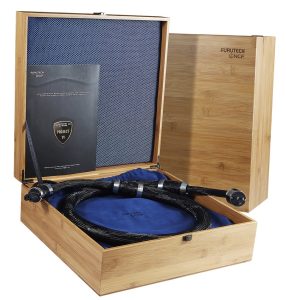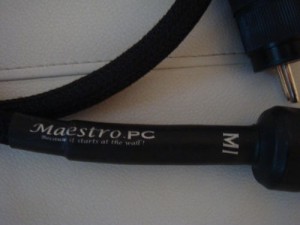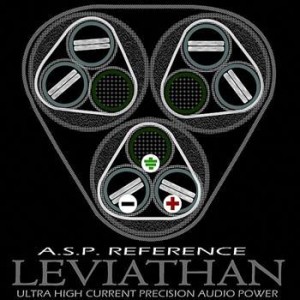As a reviewer, I'm accustomed to switching gear in and out of my system for evaluation purposes, but it's not often that I fundamentally change the overall configuration of components. Owing to this, I've been able to optimize the selection and placement of ancillaries to support my specific needs. Recently, however, I repositioned my rack, and I found that my Audience Au24 SE-i powerChords no longer reached my amplifier and CD player. After the proverbial gnashing of teeth, I began researching alternative replacement power cords from a myriad of manufacturers and ended up purchasing some Nordost cords to use in the interim. But, as I continued to explore a more permanent solution, I kept returning to Audience. I've been using Audience powerChords in my systems for years, as they've consistently proven themselves superior to competing products in the areas of sonic reproduction I value most: transparency, timbral accuracy, dynamic expression, and soundstage recreation. I e-mailed John McDonald, President of Audience AV, and explained my dilemma. McDonald and I conferred, and a few weeks later, two of Audience's flagship frontRow powerChords arrived at my doorstep.
Audience AV has always been at the forefront of innovation, incrementally improving upon its cable offerings. With the introduction of the frontRow series of products, however, McDonald and team sought to push the performance envelope beyond anything previously realized. Doing so required the Audience team to explore design methodologies heretofore untapped.
The frontRow powerChord employs numerous proprietary technologies. Audience starts with the purest copper it can find—99.9999% pure, oxygen-free OHNO continuous-cast copper—and combines it with cross-linked polyethylene (XLPE) as a dielectric. Equally as important is the geometry, and here, Audience went to extraordinary lengths to optimize conductor layout. In an effort to eradicate all sources of noise sourced from electromagnetic interference (EMI) and radio frequency interference (RMI), the frontRow combines 38 individual strands of its ultra-pure OHNO continuous-cast copper into an aggregate 13 AWG wire. The individual strands are twisted around an XLPE core and precisely spaced from one another to avoid any potential for interference. Audience offers its frontRow powerChord in two configurations: High Power (HP), for components like amplifiers, integrated amplifiers and power conditioners that draw more than 150 watts, and Medium Power (MP), for components such as preamplifiers and digital sources that draw fewer than 150 watts. The HP version utilizes six 13 AWG conductors, whereas the MP version utilizes three 13 AWG conductors. Lastly, the frontRow employs heavy-duty rhodium-plated connectors of Audience's own design.
But there's more to the flagship Audience powerChord than top-rate conductors, proprietary connectors, and Herculean build quality. With the development of the frontRow cable line, Audience implemented a number of advanced technological innovations in its drive to reduce distortions and effectuate the most accurate signal flow possible. Referred to by Audience as Musically Optimized Reduction of Resistive Energy (MORRE), this combination of technologies encompasses all that Audience has learned about cable design. I've made mention already of the frontRow powerChord's conductive materials and dielectrics, but MORRE also incorporates a myriad of treatments designed to greatly reduce the effects of cable capacitance, inductance, and resistance. Starting with resonances, Audience applies natural and synthetic crystalline and carbon-based nano-particles to dampen and reduce vibrations that result in mechanical noise. Audience additionally subjects each frontRow cable to what it refers to as "Deep Cryo II" cryogenic treatment, which consists of a slower, more precise immersion of the cable in the cryogenic bath, with a resultant greater strengthening of conductors and freer flow of electrons. MORRE also involves rigorous testing to ensure optimal signal directionality.
Each frontRow cable is subjected to extensive burn-in on a cable cooker, but MORRE takes this process a step further by employing a Tesla Coil to apply high voltages to the cable in specific pulse patterns at specific amplitudes and ratios. Named Extreme High Voltage Process (EHVP), Audience employs EHVP to create predictable pathways through the crystalline grain of the conductors, thereby optimizing signal flow.
Assembly of the frontRow powerChord is largely done by hand and takes hours to complete. Audience conducts a series of exhaustive post-production tests and conditioning processes on each assembled frontRow powerChord, and every frontRow product comes with a certificate of quality assurance, signed by the two Audience technicians responsible for assembly and testing. Every frontRow product is warranted by Audience for life. As befits its flagship status, the frontRow powerChord is ensconced in a sturdy black zippered case, which is further packaged within an attractive cardboard box. The chunky AC connectors are protected by a mesh covering, and the entire cable comes secured in bubble wrap.
During the course of the review period, my system comprised the Esoteric K-01XD SACD player, Simaudio MOON 600i v2 and Luxman L-509X integrated amplifiers, Focal Sopra 1, Focal Sopra 2 and Bowers & Wilkins 805 D4 loudspeakers, Nordost Frey 2 interconnects and speaker cables, Audience aR2p-T4 power conditioner and Hidden Treasure power outlet, with room treatments by GIK Acoustics and Acoustic Sciences Corporation. All components were placed on a SolidSteel 6.2 Audio Table, with Symposium Acoustics Rollerblock Jr HDSE footers.
The frontRow powerChord is remarkably flexible, given its substantial build; installation was uneventful and took just a few minutes. In spite of, or perhaps because of, its extensive burn-in on Audience's cable cooker, the frontRow's initial performance was underwhelming, being tonally shut-in, and dynamically and spatially flat. Within 24 hours, however, the frontRow opened up remarkably, and after a week, had fully settled in.

I've been a longtime proponent of "cables as components," believing that cables can and should be considered as key to an audio system's performance as any other component. Nevertheless, I was frankly unprepared for the effect that Audience's frontRow powerChords had on the sonic signature and musicality of my system. Audience named its flagship powerChord the "frontRow" aptly, as it immerses the listener in the musical event, bringing him/her closer to the performance. This immersive effect is not so much a matter of proximity as it is one of presence. Music grows and swells palpably in the listening room, with an unrivaled sense of realism.
The Moody Blues released its To Our Children's Children's Children album (Threshold 983 215-7) in November of 1969, and the band was inspired by the first manned moon landing in June of that year. Lyrically tackling themes of interplanetary travel, loneliness, and the passage of time, the Moodies melded electronic and acoustic instrumentation to create an otherworldly musical experience to match the esoteric lyrical concepts. With the Audience frontRow powerChords feeding my system, the myriad of swirling effects on "Beyond" seemingly filled every corner of the room, flowing left-to-right across the soundstage and wrapping around me in a psychedelic panorama. And Justin Hayward's vocal on "Watching and Waiting" hung between and above the speakers with more dimensionality and presence than I've ever experienced. It was this transcendental sense of image density and expansive soundstaging that separated the frontRow from lesser power cords. There was a sense of verisimilitude that, once heard, became impossible to listen without.
Contributing to the sense of realism was the frontRow's uncanny resolution and detail retrieval. Listening to "Riders on the Storm" from The Doors' LA Woman disc (Elektra R2 528784), I was able to discern, in stark relief, Jim Morrison's whispered accompaniment to his sung lead vocal. And so it went listening to "King of the Mountain" from Kate Bush's Aerial (Fish People 0190295568917) release, where the subtle male background vocals at the song's denouement were vividly apparent as they contrasted hauntingly with Bush's upfront vocal.
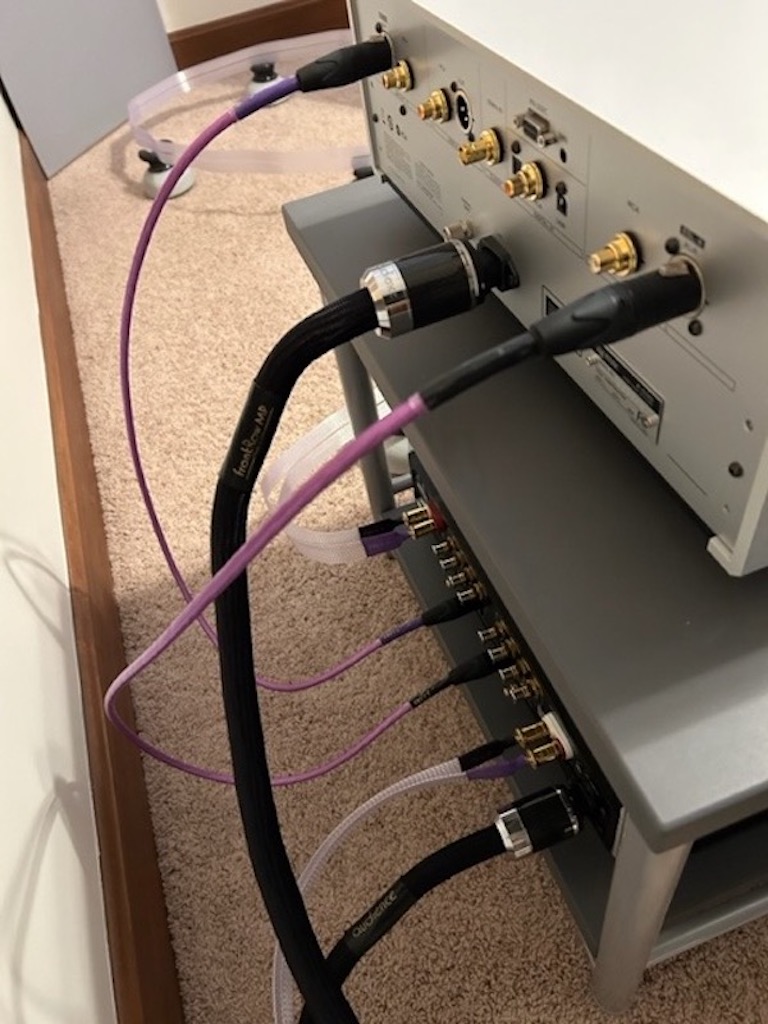
Tonally, the frontRow powerChord, while essentially neutral, represented something of a dichotomy, in that it possessed astounding resolving powers, without any accompanying vestige of stridency; likewise, it reproduced midrange and upper-bass instrumentation with a fulsome forwardness, but did so without any ostensible excess or bloat. Listening to "Leaves That Are Green" from Simon and Garfunkel's Sounds of Silence CD (Columbia/Legacy CK 65998), I reveled in the ambient cues and midrange detail, whilst appreciating the absence of hash or harshness and any undue chestiness associated with Simon's vocals. And Lisa Gerrard's and Brendan Perry's blended vocals on "Indus" from Dead Can Dance's Spiritchaser release (4AD WPCB-10078/SAD 2713) were forward and tangible and imbued with goosebump-inducing realism. Reproduction of the lower bass registers was a strong suit of the frontRow, and I was bowled over by the tremendous impact, power, and rhythmic thrust of the bass guitar that underpins Steely Dan's "What a Shame About Me" from their Two Against Nature CD (Giant 9 24719-2).
Owing to the frontRow's preternaturally inky-black backgrounds and complete absence of all noise, Stewart Copeland's cymbal work on "Regatta de Blanc" from the Police's sophomore album of the same name (A&M UIGY 15007) was pristine, superbly delineated, and cushioned on seemingly limitless levels of air. And, the frontRow's astounding noise-reduction capabilities, coupled with its ability to pass extreme current, allowed my system to render dynamic contrasts with aplomb, as evidenced by its consummate reproduction of the recurring juxtaposition of quieter interludes with the bombastic crescendos present in John Barry's soundtrack to the James Bond film, The Man with the Golden Gun (EMI MANHATTAN CDP 7 90619 2).
Underlying all of these exceptional performance characteristics was that sense of profound flow and cohesiveness, which, while a hallmark of all Audience products, was present to an unprecedented degree with the frontRow powerChord. The intricate tapestry that is Vangelis' soundtrack to Ridley Scott's 1492 – Conquest of Paradise film (Warner Music 4509-91014-2) was rendered of a piece, with the myriad acoustic and electronic instruments weaving in and out of the soundstage, and the choral passages soaring above this musical melee, but all firmly rooted and connected spatially.
Comparing the frontRow to other power cords proved enlightening. The Audience Au24 SE-i powerChord, now out of production, shared many attributes with that of its newer stablemate, albeit to a lesser degree. The Au24 SE-i was imbued with that same sense of flow and cohesiveness, but not to an as-fully-realized level. Detail retrieval and dynamic expression were excellent but fell considerably behind the capabilities of the frontRow. Tonality was superb, but in direct comparison, lacked ultimate extension at both ends of the frequency spectrum. Most significantly, the Au24 SE-i lacked the supreme levels of see-through transparency that elevated the frontRow to reference-caliber status. Next up was the Nordost Frey 2 power cord. Nordost products distinguish themselves from competing designs via their exceptional speed and clarity. The Frey 2 evinced those traits in abundance, playing at the same exalted level as the frontRow, despite its much lower price. The frontRow eclipsed the Frey 2, however, in soundstaging and dynamics, and in its ease and naturalness. The frontRow surpassed both power cords, and indeed, any other power cord I've heard in my system, when it came to its superlative levels of presence and tangibility, as well as its open view to the musical event, traits that, in my experience, are unique to the newest Audience flagship offering.
My time with the Audience frontRow powerChord was transformative. The frontRow elevated every aspect of my system's performance, peeling back layers of artifice. The eradication of heretofore-unnoticed AC-borne noise and related grunge was profound, and this benefited my system's musical reproduction as significantly as any non-loudspeaker upgrade I've made. Can the addition of a power cord be life changing? Yes, when that power cord is the Audience frontRow. It's that good.
frontRow powerChord
Retail: $6700. HP version; $6200, MP version
Audience AV




